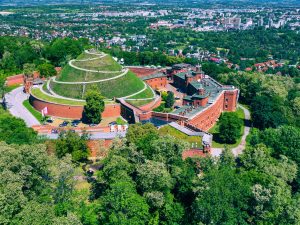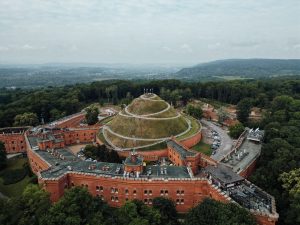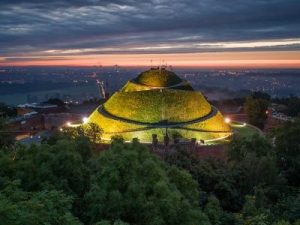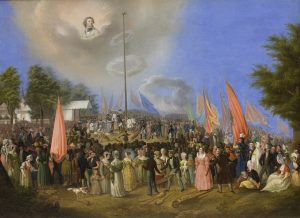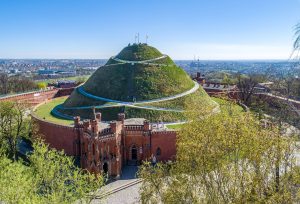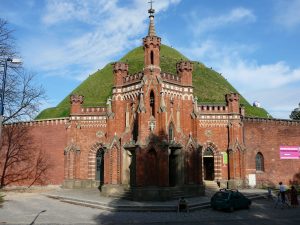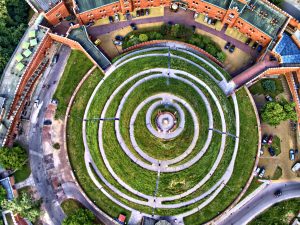Kościuszko Mound
In 2023, we celebrated the 200th anniversary of Kościuszko Mound in Kraków. It is a hill that virtually every Pole can recognize: a memorial, a monument to history, a tribute to a hero from the past.
The mound was raised in memory of General Tadeusz Kosciuszko, the outstanding leader of the battles to preserve Poland’s independence, the so-called insurrection of 1794. He led the army to victories over enemy armies, although this did not prevent the partition of Poland, which was finally carried out in 1795.
Tadeusz Kościuszko died in 1817, and his ashes rested in Kraków’s Wawel Castle in the royal crypts. The nation wanted to honor him in a remarkable way, and the idea of erecting a magnificent commemorative mound soon emerged.
Intensive construction work lasted 3 years (1820-1823), and the whole society participated with sacrifice and solidarity: teenagers and veterans of the uprisings, women and men, and even foreign tourists, the vast majority of work performed in a community action. Earth for the construction of the Mound was brought from the battlefields of the Kosciuszko Uprising: from Maciejowice, Dubienka and Raclawice*. In later years, American soil was added – soil brought from the battlefields of the American War of Independence, which Kościuszko led.
A 34-meter high mound was raised, with a diameter of 80 meters at the base and 8.5 meters at the top.
After completion, the plan was to create a settlement around the Mound for peasant families who took part in the Kosciuszko Uprising. Unfortunately, this plan was not carried out. At that time, Krakow was under Austrian annexation, and it soon turned out that the Austrian authorities had a different vision: a plan was made to fortify the city, according to which Kosciuszko Mound was surrounded by a citadel fort. More than 700 soldiers were stationed here at a time.
Today’s beautifully reconstructed fortifications around the Mound were originally built in 1850-56. Despite the plan to demolish the ruins that the buildings became after World War II, they eventually began to be rebuilt. In 1977 a hotel was opened in one them, and since 1991 the fort buildings have been the headquarters of RMF FM Radio Station.
Kosciuszko Mound is open for walks, with a paved, broad and safe path leading to the top. From the top you can see a beautiful panorama of Kraków, which I encourage everyone to do.
* you can read about this battle in the entry about the remarkable painting ‘Panorama Raclawicka’ by Jan Styka and Wojciech Kossak
Zdjęcia niepodpisane pochodzą z portalu Kopiec Kościuszki oraz ze zbiorów Depositphotos
